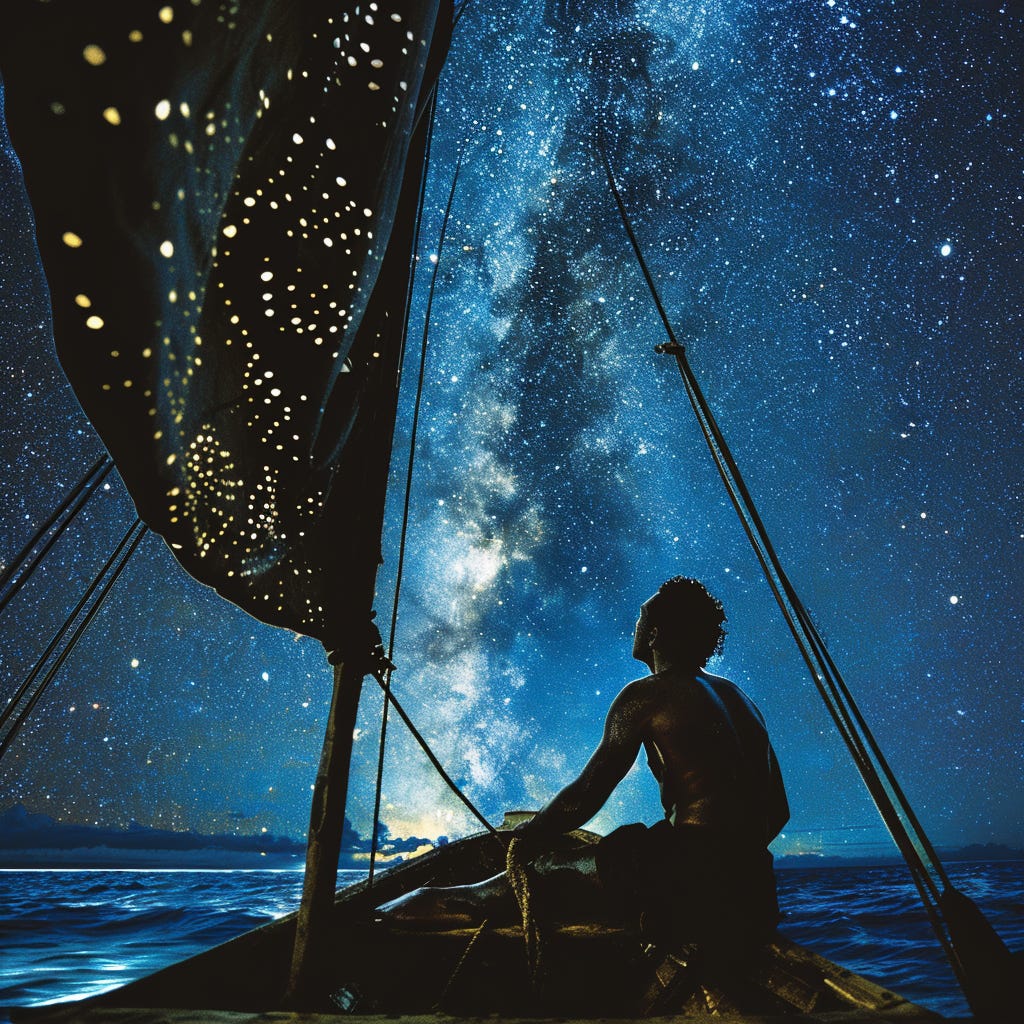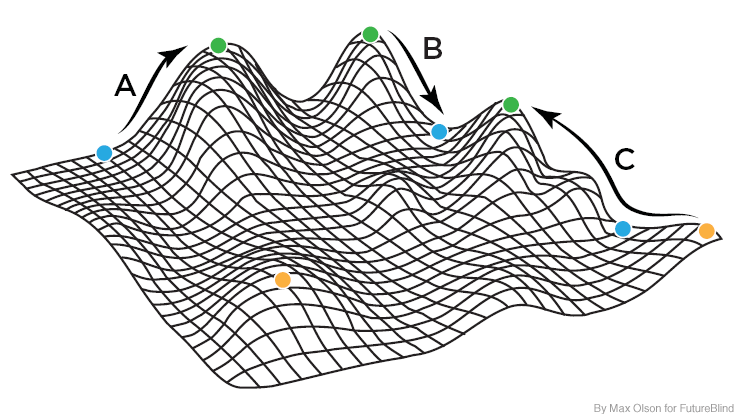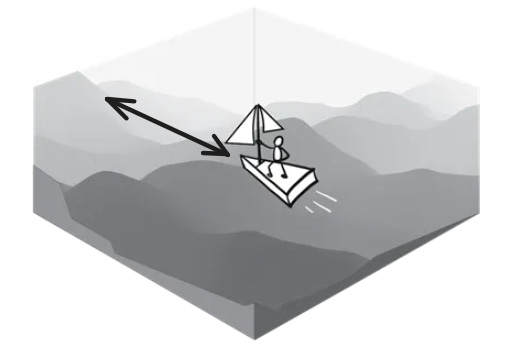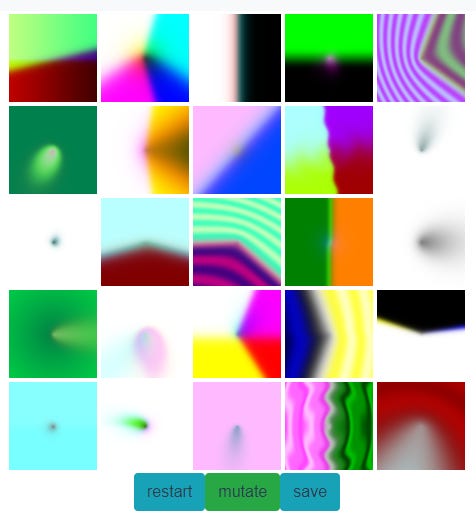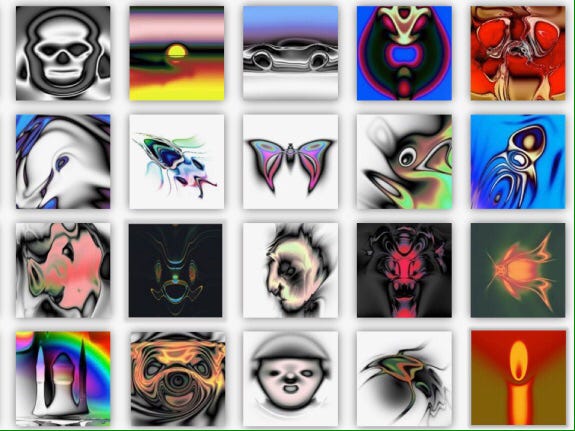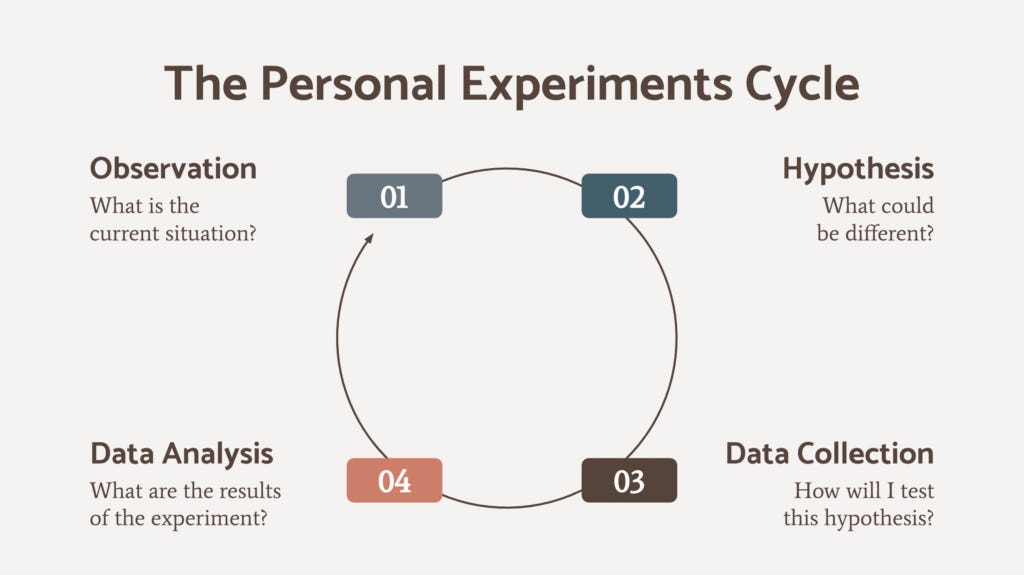"Accelerating Wisdom" Episode 2: Revealing Attractors
Article #2 of 8 in the Accelerating Wisdom Series.
Guest Expert: Anne-Laure Le Cunff is a neuroscientist and founder of Ness Labs. Her speciality is curiosity and exploratory personal experiments.
Woo Rating: 5/10 (all Leading Edge content will have a “woo rating” reflecting how far from the current consensus worldview it is. But we will never cover topics without direct practical applications)
“Attractors” are the most life-changing topic I’ve ever explored. This article represents the fastest and simplest way I’ve found to explore them.
Using Bad Maps
At the start of this year, I was grateful to be invited to attend an intimate finance conference. Some of the industry’s finest thinkers presented for 8 hours a day over a long weekend. Reflecting on the content afterwards, I realised more than 80% of the information was presented in X/Y charts.
It then struck me that the X/Y chart is truly the water we swim in. For Wall Street and Silicon Valley, it’s probably the most common “map” of reality we use. But its usefulness at expressing simple relationships can blind us to the complex nature of the real world. For example, X/Y charts can restrict us to measuring our own lives in purely linear terms, where “number go up” is often the abstract variable we optimise for.
Adding a third dimension to an X/Y chart creates a Fitness Landscape. The fact that these are commonly used to illustrate evolutionary relationships suggests that they are better representations of our lived experience.
In a fitness landscape, the goal is to get to the highest fitness peak. But they also illustrate that a local peak may not be the best outcome for you. You need to go down as well as up, not just the “up-and-to-the-right” of the 2D chart. Fitness landscapes also reflect the reality that your potential options in life can stretch in an infinite number of different directions.
If you add a fourth dimension, time, the static fitness chart turns into an undulating sea, as other species and the environment evolve around you. The more competitive and fast-paced the circumstances, the more the landscape resembles a churning storm.
How do you steer your ship safely through this storm? You add a fifth dimension. This is an “attractor”, a force that helps you navigate through time and space.
Attractors are what’s missing from our consensus map of reality.
What Are Attractors?
An attractor is something that helps you navigate a complex, rapidly changing environment. The world is “combinatorially explosive”, which means there are too many options to test with trial and error. Attractors are the way evolution narrows our options to good choices.
In 1942, Italian mathematician Luigi Fantappiè proposed a law that's symmetrical to entropy ("things fall apart"). He called it "syntropy". This force produces a continuous increase in complexity through the action of attractors[1]. And I think a quick glance outside your window makes this relatively intuitive. We've gone from rocks to plants to humans to the Internet. Our environment is getting more complex at an exponential rate. But we also have to step back for a second and define what complexity means. It’s tricky, because it can almost seem like a paradox.
Something that is complex has very differentiated parts that are also integrated into the whole.
The best and most intuitive example of complexity is us. If you weren’t differentiated, you’d all be made up of identical cells: you're a slime mold. And if you were not integrated, all your different organs and bones and skin would just be a slippery sludge on the floor. The fact is that we are composed of an incomprehensibly large number of differentiated parts that all somehow work together to make a complex and coherent whole.
The more complex something is, the more conscious it becomes. The human brain is the most complex thing in the known universe, and as far as we know, we are the most conscious beings. Becoming more complex and integrated makes you wiser; you can navigate your environment more effectively.
If the universe is trending towards complexity, and we are obviously a part of the universe, then we would need to experience this force somehow. The legendary systems theorist Ervin Laszlo calls this the "Holotropic Attractor." It simply means something that guides us towards greater wholeness, integration and complexity. He argues that, for humans, “this attractor manifests as instinct, intuition, or what might be described as subtle spiritual insight.”[2]
As I argued in my brief five minute Sohn New York talk and my longer presentation [3], we literally experience attractors as what we are curious about, drawn to, love or simply find interesting.
There’s a really good example of this concept from the world of Artificial Intelligence. Picbreeder was a project started by the researcher Ken Stanley. You can try it yourself here. First you will be presented with a set of random pictures. You can select one that’s “interesting” to you and click “mutate.”
I picked the one on the top right, and this was the result.
You can then repeat those steps to mutate an image as many times as you like. What Stanley’s research showed was that Picbreeder’s users created diverse and recognizable images far faster than could be predicted by chance alone. The special evolutionary ingredient was the human user’s decision as to which picture was interesting. Their connection to an attractor produced complex and novel pictures.
But Stanley also discovered that the “stepping stones” to recognizable pictures almost never resembled the final outcome. If users tried to deliberately “breed” a butterfly or skull in advance, they simply couldn’t do it.
This experiment catalysed a profound insight in Stanley. He realised users could only produce true novelty by seeking it one step at a time. He has subsequently argued that surprisingly few major inventions were invented with that particular breakthrough explicitly in mind in advance[4]. The fact that you can only see one step at a time when following an attractor is a powerful illustration of the practical application of faith to real life. It’s like crossing the river by feeling the stones with your feet.
In stark contrast, the flatland of an X/Y chart optimises for a single path with predefined outcomes: number go up. Stanley’s work clearly illustrates the flaws in this model:
“This isn't how the world works. That's why there's cognitive dissonance in Western culture... So many objectives pervading everything. We somehow, I think, at some deep instinctual level realize this is insane…
…So there's basically two pieces of advice I would give. One is collect stepping stones and honor interestingness. That is a system that we need to establish.”
Experiments bring attractors to life.
Collecting stepping stones means making space for novel experiments in your life and business[5]. Being open to attractors is essential to orienting us in the right direction in life. It shows you where to point your boat. Then we need to then take active steps to see if the wind fills our sails.
This means conducting experiments. This episode’s expert is neuroscientist and curiosity expert Anne-Laure Le Cunff. She's written some great pieces about the specifics of structuring experiments to facilitate curiosity. Our interview goes into much more detail on the specifics of curiosity and structuring personal experiments. (Spotify link).
One simple introductory model is her personal experiments cycle. First you ask a question around something you're curious about, then you formulate a hypothesis, then you then run an experiment that allows you to test that hypothesis. The results of that experiment will produce more questions that form the basis of your next experiment. Often that means committing in advance to a number of repetitions: for example she committed to writing a newsletter every day for 100 days (she now has over 50,000 subscribers).
In my own coaching experience, the universal requirement for a successful transition has been that you make the first step yourself. This often requires creating something enjoyable-but-vulnerable with the aim of helping others. The desired result is finding where what only you can do meets what you environment is asking of you. This helps you locate the flow of differentiation and integration, and this your unique ecological niche. Acts of differentiation feel like meaningful play, whereas integration is demonstrated by environmental feedback, often in the form of synchronicities (meaningful coincidences, a topic for later episodes).
Curiosity is also good for us. Anne-Laure has cited research that found curiosity helps people learn, fosters better relationships and even helps you live longer[6]. As it works against entropy, it also follows that syntropy should be functionally equivalent to life force itself. What gives you energy fights entropy.
A life that can be plotted on a 2D chart is likely to be similarly flat. In contrast, pursuing what you love (differentiation) in service of love (integration), is an attractor that can accelerate your personal evolution. Pursuing attractors leads to wisdom[7].
Take your curiosity more seriously by making space in your life to actively pursue interesting experiments.
“If you want a beautiful life, you have to make beautiful choices.”
- Epictetus
Suggested Experiments and Commitments:
If you’re interested in taking the benefits of these concepts beyond the screen and into your own life, here is a recommended short-term experiment and longer-term commitment.
Experiment:
In the next 2 weeks create something enjoyable but vulnerable with the aim of helping others. Did you see a response or synchronicity?
Commitment:
Make a permanent space in your life (or business) for these kinds of experiments to ensure you never lose the option value of novelty and never go stale.
Thanks Anne-Laure for your expertise! Join us again in 2 weeks with River Kenna to discuss practices that can make you more right-hemispheric, and therefore connected to attractors.
Footnotes + Additional Resources:
Subscribe to "Content Only" to see this section and also gain access to the Circle Members' Forum.
Apply here to become a member of the small 150 person network (already close to capacity!) for private expert Q&A calls and the small private WhatsApp.


